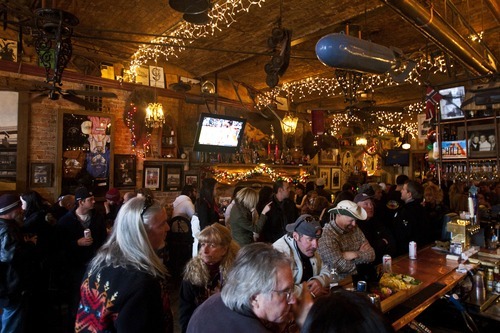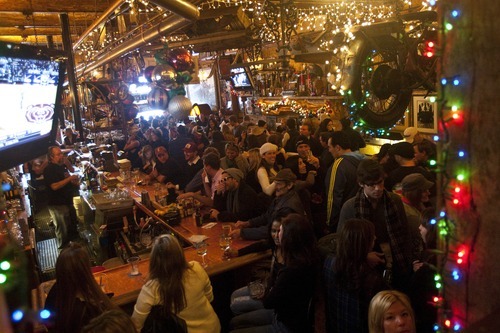This is an archived article that was published on sltrib.com in 2011, and information in the article may be outdated. It is provided only for personal research purposes and may not be reprinted.
Park City • The Sundance Film Festival is bouncing back from a two-year economic downturn, and the head of the Utah Film Commission said the state has seen an upturn in the film business in recent months.
Those twin observations were made Wednesday at a media event about midway through the festival's run.
"Our projections are the overnight attendance for the festival will be up 12 percent this year over last year," said Chamber of Commerce CEO Bill Malone. "It's not just on the front end or the back end, it's an increase in visitation every day of the festival."
This comes after Sundance business took a hit in 2009 and 2010 because of the struggling economy.
"The festival is on the upswing again," Malone said. "We saw a bit of a downturn over the last couple of years, especially on the corporate side that uses the festival as an entertainment device."
He puts the increase in the millions.
"In the past, we've estimated that this festival [brings] in excess of $50 million to [Park City] over the course of the10 days," Malone said. "So if we're up 12 percent in our occupancy, we expect to see more money in terms of not only spending, but in tax revenues."
He said an average of 15,000-16,000 Park City hotel rooms are occupied per night during the festival.
For his part, Utah Film Commission Director Marshall Moore described an uptick of another kind.
"Not only are we the host state of the Sundance Film Festival, we hosted 25 film and television productions" in 2010, Moore said. The list includes "127 Hours" and the upcoming movies "John Carter of Mars," "Darling Companion," "The Age of Dragons" and "Unicorn City."
"Overall, the film industry in the state of Utah is healthy. We had our best year ever last year," said Moore. Movie and TV productions brought the state "over a thousand jobs last year, and over a $50 million impact for the state of Utah."
He said that was especially true in rural Utah, "where much of the economic impact took place. Although a lot of it does take place in Salt Lake, we saw it in areas like Moab and Kanab and Delta and Hanksville. More than we'd seen in any other single year since I've been the director of the film commission."
Moore and Malone said the impact of Sundance is seen throughout the state (although numbers are not in for 2011).
"The economic benefit from this festival has been just tremendous," Malone said. "The value of the public relations of hosting this festival…is almost immeasurable. We feel that the energy that comes from the festival [demonstrates] that we're not just a pretty backdrop."
And that carries through after Sundance concludes.
"Our projection for the ski season — the latest snapshot — is we expect double-digit increases in our visitation between now and the [end] of the ski season," Malone said.







